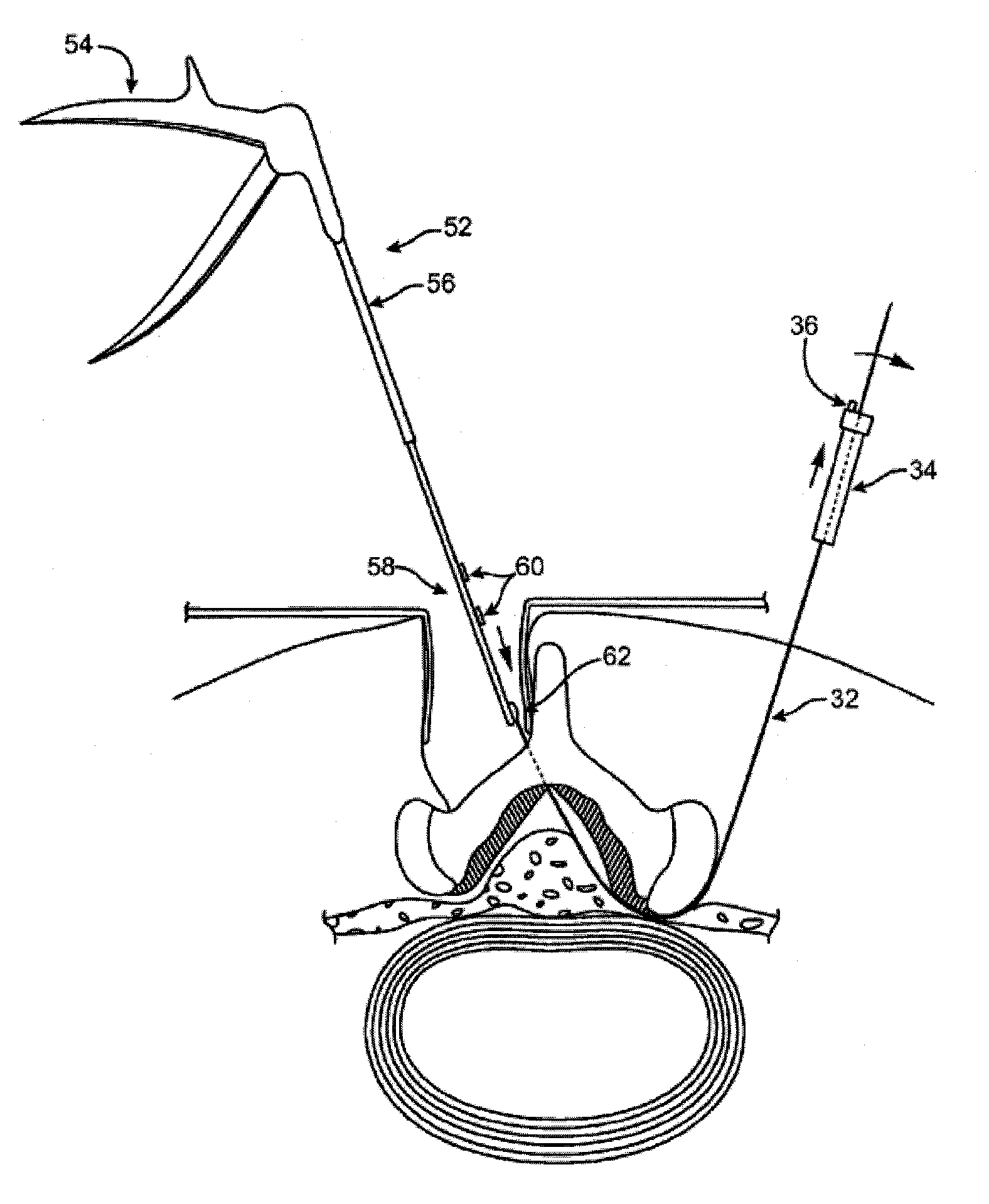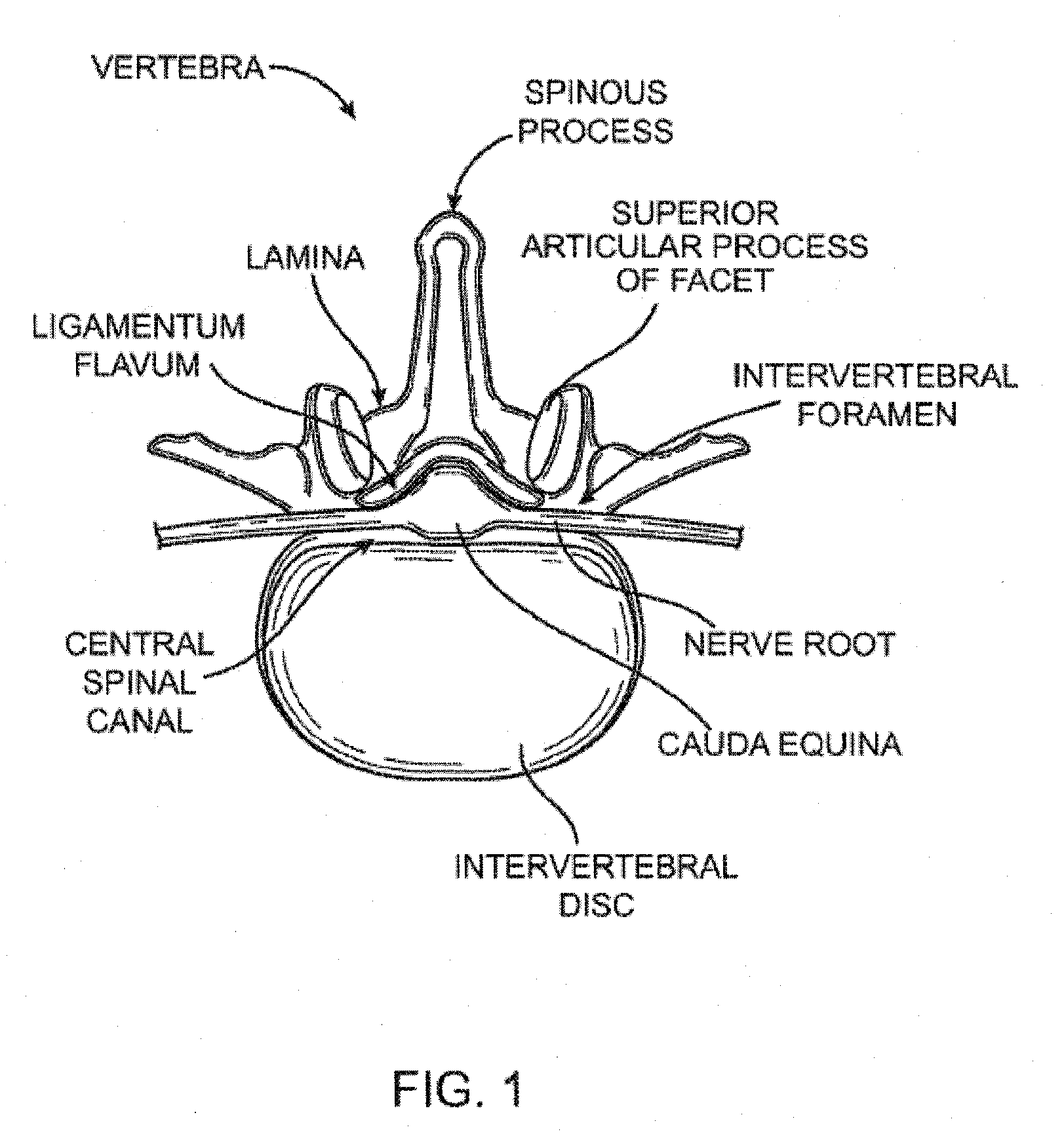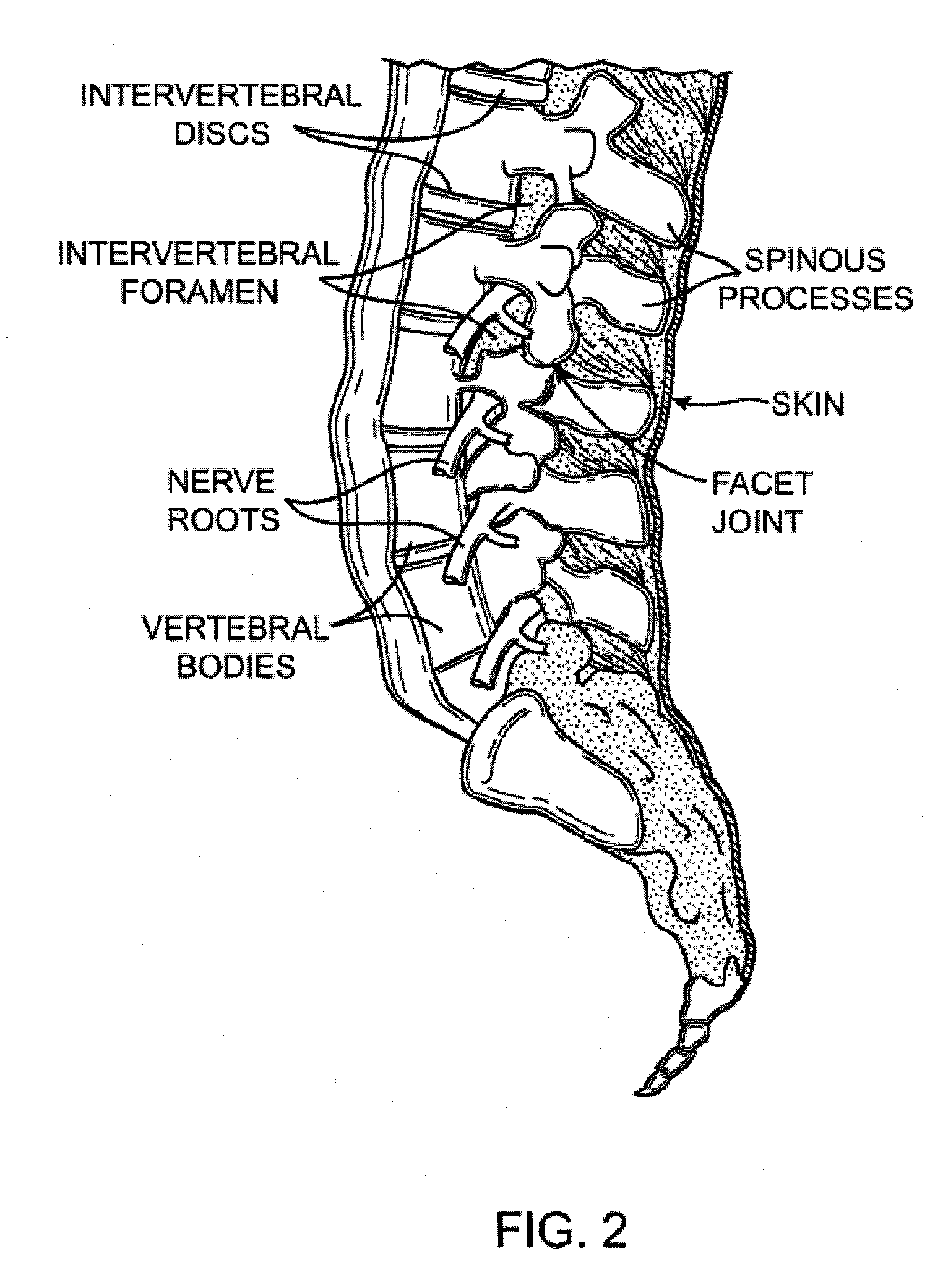Guidewire exchange systems to treat spinal stenosis
a technology of spinal stenosis and guidewires, applied in the field of medical/surgical devices and methods, can solve the problems of many challenges, reduced or even no direct visualization, and the development of less invasive surgical methods and devices
- Summary
- Abstract
- Description
- Claims
- Application Information
AI Technical Summary
Benefits of technology
Problems solved by technology
Method used
Image
Examples
Embodiment Construction
[0087]In general, the guidewire systems described herein includes a guidewire and at least one surgical device that are configured so that the proximal end of the guidewire couples to the distal end of the guidewire. The guidewire typically has a distal end that is configured to extend from a subject's body and be manipulated, and a proximal end that includes a coupling member for coupling to the surgical device. The coupling member may be referred to as a device coupling member and may be located at or near the proximal end of the guidewire. Any appropriate surgical device or devices may be included as part of the guidewire system. The surgical device typically includes a coupling member on or near its distal end that is configured to mate with the coupling member on or near the proximal end of the guidewire. The device-side coupling member may be referred to as a guidewire coupling member.
[0088]Methods of using these systems, and particularly methods of quickly exchanging surgical...
PUM
 Login to View More
Login to View More Abstract
Description
Claims
Application Information
 Login to View More
Login to View More - R&D
- Intellectual Property
- Life Sciences
- Materials
- Tech Scout
- Unparalleled Data Quality
- Higher Quality Content
- 60% Fewer Hallucinations
Browse by: Latest US Patents, China's latest patents, Technical Efficacy Thesaurus, Application Domain, Technology Topic, Popular Technical Reports.
© 2025 PatSnap. All rights reserved.Legal|Privacy policy|Modern Slavery Act Transparency Statement|Sitemap|About US| Contact US: help@patsnap.com



